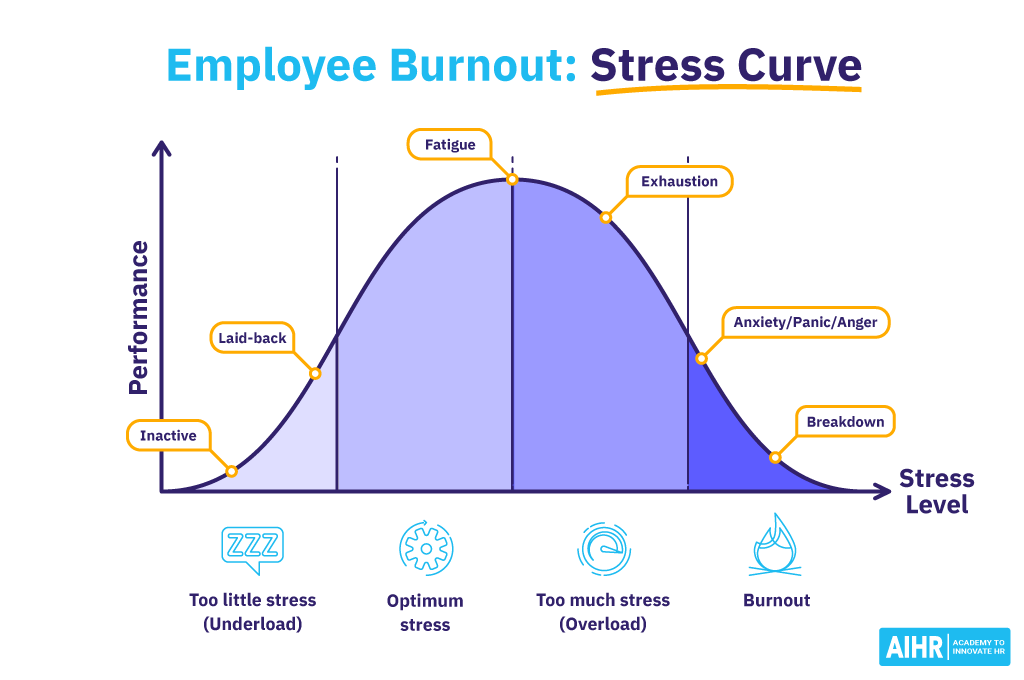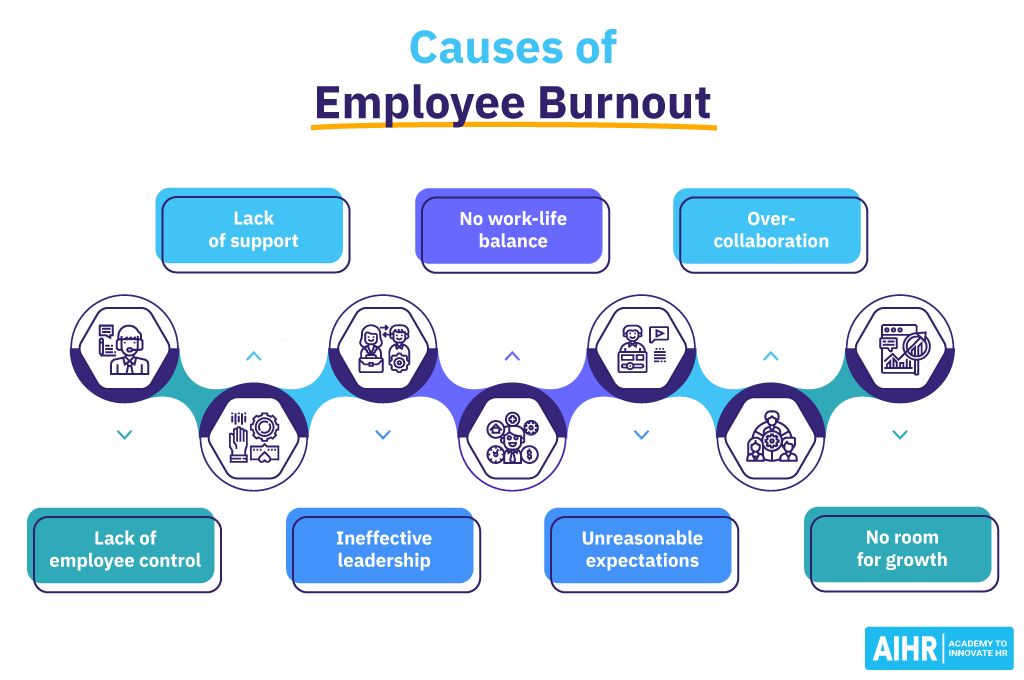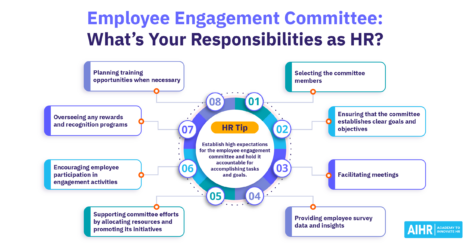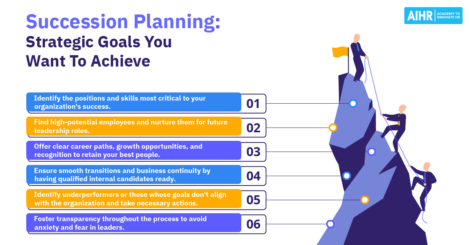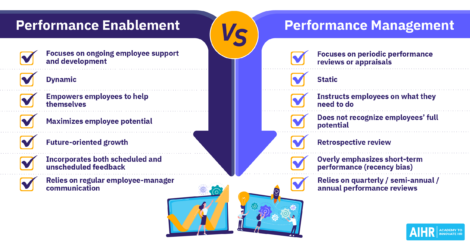How To Spot the Signs and Prevent Employee Burnout

Employee burnout is a chronic problem in modern workplaces, but the blame for this persistent condition is often placed on the individual. In reality, it’s employers that need to take action by identifying and addressing burnout. Their workplace policies could end the burnout epidemic.
Contents
What is employee burnout?
Why is employee burnout common?
What are the signs of employee burnout?
What causes employee burnout?
How can you prevent employee burnout?
What is employee burnout?
Employee burnout is a term used to describe a state of physical, mental, and emotional exhaustion caused by prolonged workplace stress. It’s a current occupational phenomenon.
When an employee is burnt out, they increase their mental distance from the job. They either feel negativity or cynicism when they have to perform workplace activities or when their job is brought up. In the end, burnout reduces professional efficacy, productivity, and efficiency.
Why is employee burnout common?
Burnout isn’t a workplace inevitability, as a properly managed work environment is less likely to stress out employees to the point it becomes chronic. An exception can be made for very stressful work environments, like healthcare, but this can still be managed through time off.
Unfortunately, studies show that employee burnout isn’t being prevented or managed:
- 77% of Deloitte study respondents say they’ve experienced burnout at their current job
- The Deloitte study also showed that 91% say that unmanaged stress impacts their quality of work, while 83% say burnout negatively impacts their personal relationships.
- Workplace passion doesn’t reduce burnout, as 64% in the Deloitte study that scored highly in “job satisfaction” say they’re frequently stressed at work. 70% say their workplaces aren’t doing enough to prevent, address, or alleviate burnout.
- A Stanford study found that workplace stressors contribute to 120,000 deaths a year.
- Remote work often contributes to higher rates of burnout, and it isn’t the employee’s fault. Employers often forget about the needs of their remote workers, especially during and after the pandemic. Remote workers are also more likely to work more hours, take fewer breaks, and neglect to use vacation time out of fear they’ll be dubbed as “lazy.”
Burnout is now officially recognized by the World Health Organization, which helped shift work stress from the individual to the organization. There’s more than enough evidence to suggest that the problem of burnout lies with the company, not the workers, and it’s time to step up.
If you’re wondering if your specific workplace is causing burnout, this toxic workplace checklist can help you decide. HR can use this checklist to implement policies and benefits that reduce exhaustion, such as a decent raise or non-cash compensation in the form of fringe benefits.
What are the signs of employee burnout?
Now that we know what employee burnout is, we can start to look for the signs of burnout in our organizations. If you ignore the following signs, your burnout problem will keep getting worse.
Here are 10 signs an employee is currently experiencing burnout:
1. Reduced productivity
When putting in extra effort to complete a mundane task leads to a disproportionate or meager outcome and output, it could be a sign of employee burnout. These feelings have to be persistent. After all, we all have bad days.
2. Lack of focus
Similar to decreased productivity, your inability to focus on tasks and toggling between tasks due to lack of concentration can indicate burnout. Not having the capacity to focus leads to a slew of performance-related issues that tank productivity.
3. Low self-esteem
This can manifest in a number of ways, such as low morale, self-criticisms, and lack of confidence. The shifting landscape of the business environment can also create feelings of being unprepared or overwhelmed.
4. Emotional exhaustion
Longer hours with increased demands and decreasing resources can lead to extreme fatigue and leave staff feeling drained. When every morning feels like a huge effort, it’s a sign of too much stress and too little rest.
5. Changes in body language
It’s essential to pay attention to how the body responds to the daily grind. Slumping in chairs, walking slower, lack of enthusiasm, and lagging behind during group activities all point to burnout, and something needs to be done.
6. Absence of creativity
Burnout can take away the fun of creativity and innovation. When it becomes a struggle to generate ideas or think outside the box, a person may be suffering from mental exhaustion. People can’t be creative in oppressive environments.
7. Low engagement
If a person is withdrawing from their colleagues or speaking only when they absolutely have to, it’s time to take note. Withdrawing from conversations is a sign that a person is emotionally drained and exhibits low engagement scores.
8. Poor problem-solving skills
Fatigue impacts the way you process information, leading to a lack of strategic thinking and difficulty with problem-solving. If every problem seems insurmountable or too much of a bother, it’s a tell-tale sign of employee burnout.
9. Too much criticism
Burnout can lead to feelings of helplessness that manifest into constant criticizing and nitpicking yourself, others, and their ideas. If your employees have an uncharacteristically bad attitude or talk down to others, they could be showing signs of burnout.
10. Mistakes and absenteeism
A team member who makes more mistakes than usual or refuses to show up to work is likely burnt out. They likely experience a lot of dread at the thought of coming to work and seeing their bosses or coworkers or getting in trouble.
When employees are burnt out, they place all of their focus on surviving, not thriving. They’ll often neglect their future needs for growth, well-being, and general workplace satisfaction.
What causes employee burnout?
Companies that have a large amount of burnt-out employees exhibit the following traits:
- Lack of employee control: When your staff feels like they’re constantly juggling tasks and don’t have the ability to prioritize, they may start to feel overwhelmed.
- Lack of support: Your team may be feeling burnout if they don’t have the resources they need to get the job done. This includes pay, benefits, and workplace technology.
- Ineffective leadership: If small business leaders don’t provide the motivation and guidance their teams need, burnout can easily set in and persist long-term.
- No work-life balance: Technology has blurred the line between work and home, making it much harder for employees to maintain a healthy balance.
- Unreasonable expectations: Unrealistic deadlines and expectations can lead to burnout in your team. Overloading star employees also leads to burnout.
- Over-collaboration: Too many meetings are a bad thing. Collaboration is great, but too much of a good thing can overwhelm workers and destroy their confidence.
- No room for growth: Employees that don’t feel like their work is meaningful or that they have the chance to develop and grow, can often experience burnout.
Micromanagement, a toxic workplace culture, and geo-politicizing world events (like Covid-19) are things to avoid if you want to create a welcoming environment for all future employees.
How can you prevent employee burnout?
To alleviate employee burnout, organizations have to take a holistic approach. Once you accept that your organization is causing the problem, you can finally take the steps to solve it for good.
1. Make well-being and mental health a priority
The benefits of wellness programs are never-ending. From happier employees to an improved employer brand, everyone benefits when mental health is addressed in the workplace.
All wellness strategies should address the 5 elements of well-being: Physical, Community, Financial, Social, and Career. In an ideal world, these 5 elements align together in harmony and prop the rest of the elements up. Your strategy should try to emulate this harmony.
Let’s look at each of the 5 elements more closely:
- Physical: Being in good health. HR can improve physical well-being through exercise classes, more time off, more breaks, and allowing employees to get some fresh air.
- Community: Feeling safe in your city and workplace. A positive working environment and an open culture that allows discussions of mental health promote community.
- Financial: Having access to wants and needs. Employees who receive great pay and benefits are more likely to work harder and won’t feel excessive stress at work.
- Social: Building supportive relationships. HR should work towards creating a diverse workplace that bonds based on differences. Inclusivity should be your main goal.
- Career: Liking where you work. HR can instantly improve their employee’s mental health if they focus on work satisfaction. Well-trained managers can make a big difference.
Your wellness strategy must also make mental health a priority. That means doing small things, like offering meditation and yoga sessions, and big things, like offering employees a safe space to express emotions. Above all else, you should never make fun of someone for being honest.
2. Improve the employee experience
After taking care of the immediate issues revolving around well-being and wellness, you can start to improve the general employee experience. If you used The 5 elements as a starting point, you should find plenty of ways to create the best employee experience from start to finish.
As a rule, you’ll want to add the following strategies to reduce burnout:
- A simple and straightforward job application that accurately describes the position.
- Hiring employees that accurately reflect the job description reduces turnover.
- Carving out an onboarding experience that explains the job role in full.
- Explaining why a task has to be completed, as that connects employees with their role.
- Committing to gathering feedback (in-person or anonymously) and acting on it.
- Communicating regularly and openly with your employees and managers
- Offering flexibility, remote work options, and communication cut-off times.
- Offering more money and benefits, including tuition reimbursement and vacation.
- Job security and stability through a consistent effort to keep roles filled.
- Recognition and appreciation through promotions, kind words, and gifts.
Without employees, your workplace wouldn’t function. Without productive employees, you’ll lose profits. It’s in your best corporate and emotional interests to improve the employee experience.
3. Make burnout management’s responsibility
We’re not in the business of pointing fingers, but it’s clear that management (ranging from lower management to CEOs) must take responsibility for employee burnout. A dictatorial management style is poisonous to your workplace culture and needs to be addressed to prevent burnout.
Regardless of the size of your organization, all managers should:
- Be flexible when setting schedules and balancing workloads and expectations.
- Encourage collaboration without scheduling more than one meeting every week.
- Lead by example by taking vacations and days off when they’re feeling sick.
- Support the idea of getting rest and avoid shaming employees for feeling tired.
- Support employees by purchasing automation tools and hiring staff.
- Listen to employees and adjust solutions to problems if one isn’t working.
- Watch for signs of burnout and act on them, avoiding worsening health problems.
Without the help of your management staff, burnout will persist. In fact, they could be the source of persistent burnout. If that’s the case, consider retraining them or finding new managers.
In conclusion
Burnout isn’t to be scoffed at; it’s a chronic problem that HR and the company must address if you want to take care of employee health and wellness. But, if you’re able to identify burnout and tackle the workplace issues causing it, you’ll be better equipped to support your staff and improve productivity and employee engagement within the organization.
Weekly update
Stay up-to-date with the latest news, trends, and resources in HR
Learn more
Related articles
Are you ready for the future of HR?
Learn modern and relevant HR skills, online





